History & Records
29th July, 1966 Counter-coup: Africa’s Bloodiest Coup D’état
The first shots shattered the peace of the night at the Abeokuta Garrison of the Nigerian Army a few minutes after midnight on July 29, 1966.
Three casualties lay instantly dead in the persons of Lieutenant Colonel Gabriel Okonweze, the Garrison Commander, Major John Obienu, Commander of the 2nd Reece Squadron, and Lieutenant E. B. Orok, also of the Reece Squadron. It was the beginning of the much-touted revenge coup of Northern Nigerian army officers and men against the regime of Major General Johnson Thomas Umunnakwe Aguiyi-Ironsi.
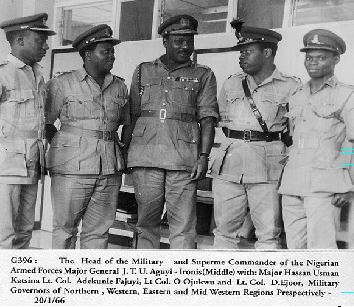
By August 1, when Lieutenant Colonel Yakubu Gowon assumed power in Lagos as Nigeria’s second military Head of State, the bullet ridden bodies of both Ironsi and his host, Lieutenant Colonel Francis Adekunle Fajuyi, the military Governor of Western Nigeria, lay buried in shallow graves at Iwo, outside Ibadan.
“Within three days of the July outbreak, every Igbo soldier serving in the army outside the East was dead, imprisoned or fleeing eastward for his life”, observed Professor Ruth First in The Barrel of a Gun: The Politics of Coups d’Etat in Africa [Allen Lane The Penguin Press, London, 1970, p317.]
But Africa’s bloodiest coup did not stop at that stage, despite the shooting deaths of 42 officers and over 130 other ranks, who were overwhelmingly Igbo. The killing sprees and ever-expanding killing fields spread like wild fire across most of the country. There were three phases to the coup – the Araba/ Aware massacres in northern Nigeria pre-July that called for northern secession, the July Army bloodbath, and the ethnic cleansing that went on for months after Ironsi had been assassinated and his regime toppled. The maelstrom prompted Colonel Gowon into making a radio broadcast on September 29, 1966.
This was the kernel of what he said: “You all know that since the end of July, God in his power has entrusted the responsibility of this great country of ours into the hands of yet another Northerner. I receive complaints daily that up till now Easterners living in the North are being killed and molested, and their property looted. I am very unhappy about this. We should put a stop to it. It appears that it is going beyond reason and is now at a point of recklessness and irresponsibility.”
Salutary intervention
But Gowon’s salutary intervention changed nothing, as the massacres continued unabated. Northern soldiers and civilians went into towns, fished out Easterners and flattened them either with rapid gunfire or with violent machete blows, leaving their properties looted or torched.
According to the Massacre of Ndigbo in 1966: Report of the Justice G. C. M. Onyiuke Tribunal, [Tollbrook Limited, Ikeja, Lagos] “…between 45,000 and 50,000 civilians of former Eastern Nigeria were killed in Northern Nigeria and other parts of Nigeria from 29th May 1966 to December 1967 and although it is not strictly within its terms of reference the Tribunal estimates that not less than 1,627,743 Easterners fled back to Eastern Nigeria as a result of the 1966 pogrom.”
Counter-coup
This is contemporary Nigerian history, only 50 years old. But when experts like Dr. Reuben Abati and Professor Jonah Elaigwu write about it, they lose all sense of numeracy and statistical acuity, and glibly state that the July 29, 1966 counter-coup cost “many” Igbo lives.
Well, the truth is that the July 29 counter-coup appears to be the bloodiest in the world’s recorded history because the casualty figures it posted far outstrip those registered in decided bloody coups like the Glorious Revolution of 1688 in which King James II of England was overthrown by an invading army led by William III of Orange-Nassau; the 18 Brumaire of 1799 coup in which General Napoleon Bonaparte overthrew the French Directory on November 9, 1799; the Wuchang Uprising of 1911 that overthrew the Qing Dynasty and led to the establishment of the Republic of China; the Bolsheviks October Revolution of 1917 that led to the creation of the Soviet Union; and the Iraqi coup d’état of 1936, the first among Arab countries. Each of these coups/revolutions led to war. But none of them managed anything near the sea of blood occasioned by July 29, 1966.
Giving their interest in posting photographs and videos on the Internet by Instagram and Snapchat, and advertising mostly poor language on Facebook and other such portals, today’s Nigerian youths may know next to nothing about what led to the catastrophe of July 29. But the details follow here for those of them interested in learning.
The problem sat rigidly on the superficiality of Nigeria, a geographical expression contrived by colonialist Britain. At Independence in 1960, the country operated a federal system of government with three powerful regions that didn’t take dictation from Lagos, the nation’s capital. A fourth region, the Midwest, with capital in Benin City, was created in June 1963.
But destroying the very fabric of the artificial political entity were tribalism and corruption, corruption which by today’s standards, would seem like cloistered nuns delightfully engaging in a game of Ping-Pong!
Controversial census
There were the 1960 and 1964-1965 uprisings in the Tiv country of the Middle Belt, and fractious elections in Western Nigeria in 1964 and 1965. There was the highly controversial national census exercise of 1963, and there was the military action of Isaac Boro’s Niger Delta Volunteer Force.
Then, the military moved in on January 15, 1966, having contracted the germ of the idea of military putsches running riot across the world. In Algeria, for instance, Colonel Houari Boumediene and Ahmed Ben Bella overthrew Benyoucef Benkhedda on July 3, 1962.
Three years later, on June 19, 1965, Boumedienne overthrew Ben Bella. More: In Argentina, General Eduardo Lonardi overthrew President Juan Domingo Peron on September 16, 1955. On March 29, 1962, General Raul Pogi overthrew President Arturo Frondizi. In Brazil on March 31, 1964, Humberto de Alencar Castelo Branco overthrew João Goulart to set up a 21-year-long dictatorship. In Indonesia General Suharto overthrew President Sukarno on September 30, 1965.
First West African coup
Inside Africa itself, coups were also trending. Colonel Gamal Abdel Nasser had overthrown Muhammad Naguib as far back as February 27, 1954. The first coup in West Africa was on January 13, 1963, when Etiene Eyadema overthrew Sylvanus Olympio. Colonel Joseph (later Mobutu Sese Seko) toppled Prime Minister Patrice Lumumba on September 14, 1960 and “neutralized” all political parties in Congo-Kinshasa. In neighbouring Benin Republic, Christophe Soglo overthrew Hubert Maga on October 28, 1963. Soglo carried out another coup on November 27, 1965, toppling Sourou-Migan Apithy.
Both coups happened when the country still bore the name of Dahomey.
On New Year’s Day of 1966, Colonel Jean-Bedel Bokassa overthrew his cousin, President David Dacko in Central Africa Republic. Two days later, Lieutenant Colonel Sangoulé Lamizana overthrew President Maurice Yaméogo in Upper Volta, which was renamed Burkina Faso in 1984 by Marxist revolutionary Captain Thomas Sankara.
But there was a difference between the rash of coups that occurred elsewhere and the one of January 15, 1966 in Nigeria. The Nigerian coup took an immediate ethnic colouration, and for reasons that were all too obvious. Of the five Majors that formed the innermost circle of the plotters, four were Igbo – Patrick Chukwuma Kaduna Nzeogwu, Emmanuel Arinze Ifeajuna, Donatus Okafor, and Chris Anuforo. But there was also among them Major Adewale Ademoyega, a Yoruba. Then, there was also the more disturbing fact that most of the coup’s casualties were non-Igbo, like Prime Minister Sir Abubakar Tafawa Balewa, Northern Premier Sir Ahmadu Bello, Western Premier Chief Samuel Akintola, and Federal Finance Minister Chief Festus Okotie-Eboh. No Igbo politician had lost his life in the bloody action.
Further, in executing the coup, the military had turned against itself in the killings of the following Northern military officers: Brigadier Zakariya Maimalari (Commander 2 Brigade), Colonel Kur Mohammed (Chief of Staff, Army Headquarters), Lieutenant Colonel James Yakubu Pam (Adjutant-General), and Lieutenant Colonel Lieutenant Colonel Abogo Largema (Commander 4th Battalion, Ibadan). Two Yoruba officers were also victims: Brigadier Samuel Ademulegun (Commander 1 Brigade), and his deputy, Colonel Ralph Sodeinde. The coup was, in effect, as bloody as they come. Its very nature fanned the fiction that it was an Igbo coup.
Follow us on social media:-
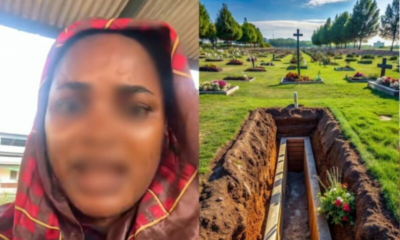
 News2 days ago
News2 days agoEmotions flow as lady witnesses tragedy at hospital, pregnant woman and baby pass away during labor
-
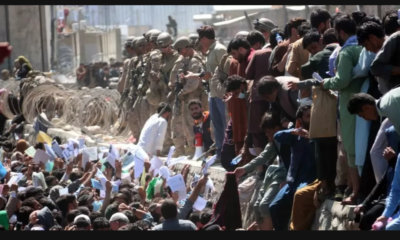
 Crime15 hours ago
Crime15 hours agoIsraeli bombing of Gaza k!lls 150 people in two days
-
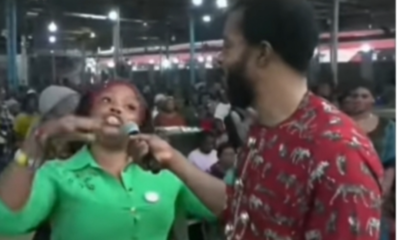
 Lifestyle2 days ago
Lifestyle2 days ago“Daddy konji dey hold me, give me husband” – Lady begs Ebuka Obi for partner says she wants to start having s3x, he reacts
-
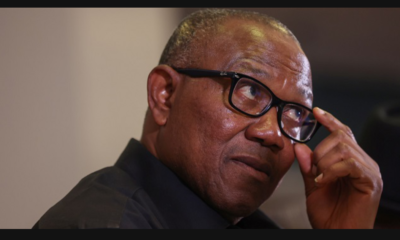
 News2 days ago
News2 days agoPeter Obi reveals how being in the opposition of the current government has affected him







